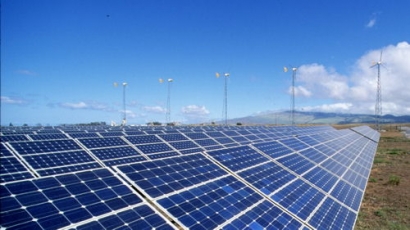
This direct proof of a previously unconfirmed charge state in a manganese-containing battery component could inspire new avenues of exploration for battery innovations.
X-ray experiments at the U.S. Department of Energy’s Lawrence Berkeley National Laboratory were key in the discovery. The study results were published February 28 in the journal Nature Communications.
Scientists at Berkeley Lab and New York University participated in the study, which was led by researchers at Natron Energy, formerly Alveo Energy, a Santa Clara, California-based battery technology company.
The battery that Natron Energy supplied for the study features an unconventional design for an anode, which is one of its two electrodes. Compared with the relatively mature designs of anodes used in lithium-ion batteries, anodes for sodium-ion batteries remain an active focus of R&D.
The anode featured in this latest study is made up of a blend of elements – including manganese, carbon and nitrogen – that is chemically similar to the formula of the iron-containing paint pigment known as Prussian blue.
“Typically, in lithium-ion and sodium-ion batteries, the anode is more often carbon-based,” said Wanli Yang a staff scientist at Berkeley Lab’s Advanced Light Source, the source of X-rays that were used in the battery experiments.
But in this case, both of the battery’s electrodes utilize the same type of materials based on elements known as “transition metals” that are useful in chemistry because they can exhibit various charged states. The other electrode, called a cathode, contains copper, nitrogen, carbon, and iron.
“The very interesting part here is that both electrodes are based on the chemistry of transition metals in the same type of materials,” he added, with iron in the cathode and special manganese chemistry in the anode.
The battery has been shown to deliver up to 90 percent of its total energy in a very fast, five-minute discharge, and to retain about 95 percent of its discharge capacity for 1,000 cycles. It offers an alternative to gravity-based energy storage systems for electric grid, in which water is pumped uphill and then released downhill on demand to generate electricity.
Commercial prototypes based on the battery tested at the Lab entered customer beta testing earlier this year. In addition to grid applications, Natron Energy is promoting the technology for data centers’ emergency power, and for heavy equipment such as electric forklifts, among other possible applications.
The Advanced Light Source and Molecular Foundry are DOE Office of Science User Facilities.
The work was supported by the U.S. Department of Energy’s Advanced Research Projects Agency-Energy, the Department of Energy’s Office of Science, the Laboratory Directed Research and Development program at Berkeley Lab, and the National Science Foundation.

